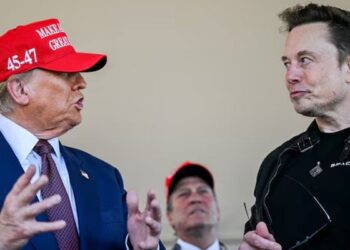The unveiling took place at a special event on Thursday evening at Warner Bros Studios in Burbank, California. Dubbed the “Cybercab,” this futuristic vehicle features no steering wheel or pedals. Instead of traditional charging methods, it utilizes inductive charging, allowing for a plug-free experience. Check out the driverless Cybercab in action below:
Robotaxi is premium point-to-point electric transport, accessible to everyone pic.twitter.com/oLykwaaTHm
— Tesla (@Tesla) October 11, 2024
Musk indicated that Tesla aims to begin production of the Cybercab in 2026, although he acknowledged that he tends to be “a bit optimistic” regarding timelines.
During the event, the company also introduced a larger autonomous vehicle capable of transporting both passengers and goods:

The event is ongoing if you’d like to tune in:
Earlier this year, Tesla’s app integrated a new ridesharing feature designed for the robotaxi service. Musk previously mentioned that Tesla owners could recover their vehicle costs by offering it for autonomous rideshare when not in use.
While Tesla already manufactures vehicles equipped with advanced autonomous features, a driver must always be present and in control. However, their experience in self-driving technology is a strong advantage as they prepare to launch a comprehensive robotaxi service. Nevertheless, regulatory authorities will first need to ensure the vehicle operates safely.
The competition will be tough, with companies like Waymo, owned by Alphabet, and Cruise, backed by GM, which have been developing autonomous vehicle technology for years. Waymo has been successfully using its autonomous cars for paid rides in various cities for some time, albeit under strict regulations. On the other hand, Cruise faced setbacks due to multiple incidents during testing, leading to a temporary halt in its operations last year, although it is cautiously re-entering the market now.





